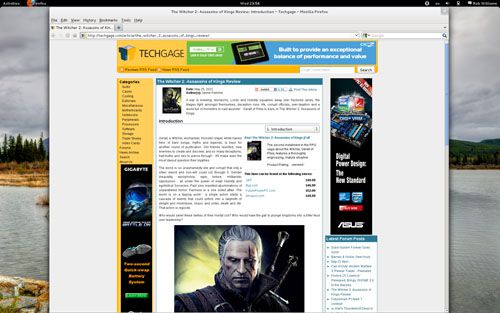Welcome to the forums, Adam, and thanks for taking the time to post

AdamW said:
This is not true. Hold down 'alt' while you have the user menu open, and 'Suspend' turns into 'Power Off...' . You can also log out and shut down or restart from the login manager.
I hate to admit it, but a simple Google search could have told me the same.
Having come to understand what GNOME developers can be like, and having no option to restore it in the system settings, I had just figured it was a cut feature. Now that I'm aware of this, I kind of prefer it, but it's subtle. A "Welcome to GNOME 3" guide placed on the desktop would have helped out here.
AdamW said:
Yes, neither of these is the most intuitive thing ever, but it's simply incorrect to say "To see those options, you literally need to push the power button on your PC." Actually, pressing the power button doesn't present those options either, it just suspends, by default.
That's also correct. I had changed the behavior and then forgot about it when the time came to write the post.
AdamW said:
You can customize all of these things. All of these things are in fact settable within GNOME, but it was decided not to provide a GUI interface to these settings by default; you can flip them directly in dconf/gsettings using dconf-editor, or you can just use gnome-tweak-tool to do it. You can change the lid close action and put the minimize/maximize buttons back from gnome-tweak-tool (and change various other things, too). For the display timeout, the dconf key is org/gnome/settings-daemon/plugins/power/sleep-display-ac (and sleep-display-battery). I think if you set it to 0 it will disable this, though I haven't tested. Or you could just set it to a really high number.
Thanks a ton for the information; it's appreciated. This to me though is a perfect example of GNOME nonsense. There's
no reason these options couldn't remain available in the "System Settings". Those familiar with the command-line might not mind (I do, despite being fluent with it), but for the casual user, this is the kind of thing that makes Linux look like an OS for geeks, rather than welcoming as it should be.
Because this is GNOME, a full-blown GUI environment, and not something like Fluxbox, I don't consider the command-line to be a valid method of customization. Customization should be a user-friendly experience, not an absolute chore.
AdamW said:
On your NVIDIA card: the reason nouveau doesn't do acceleration out of the box is to do with firmware licensing, but there's movement on this front. See
http://www.phoronix.com/scan.php?pag...item&px=OTQ4NA for some details.
It's not the nouveau driver in particular that bothered me; it was the fact that I couldn't get rid of it in order to install the official NVIDIA driver. I used a variety of tricks including an attempt at blocking the driver from being loaded with the modprobe blacklist, and also uninstalled it through the Add/Remove Software. I even had the NVIDIA driver itself attempt to kill nouveau off, but it just wasn't happening.
In the end, I had to resort to adding a repository in order to install a semi-recent driver. Ideally, I wouldn't have had to do that, but rather should have been able to install the official driver as normal.
I tried Gnome3 on my Archlinux install, but wasn't very impressed, to be honest. The whole redesign seems unnecessary and amateurish. Too much is missing. It reminds me of the KDE 4 fiasco that happened a few years ago. It almost makes me want to just stick to the command-line when it comes to Linux.
I am not sure I'd agree on it being amateurish to be honest, because aesthetically, the environment is brilliant. There's just one thing I'd like to see changed, and that's the ball with the flat bottom that appears under a loaded application in the left taskbar. Those stand out like a sore thumb, but would have worked if the taskbar was mounted flat at the bottom. I think a glow should just appear behind the icon as a ball or a square - or it should have something similar to Unity where a simple > appears next to the option application. That's not ideal either but I do prefer it.
As for things missing, join the club ;-)
How long ago did you test it out with Arch, though? You might not have had the full experience if it was nearer to the official launch.


